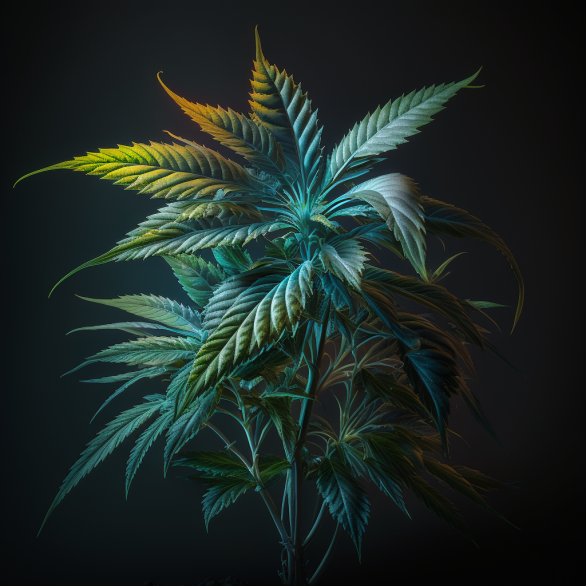Plant medicine has been advancing long before recorded human history. Over centuries, we’ve learned to take advantage of nature’s boundless wealth and power for countless health benefits.
It should come as no surprise that Western medicine has, directly and indirectly, taken plant compounds and made lab-based products out of them. Even though there’s a strong human desire to invent and utilise synthetic chemistry to create new drugs, nature is still the unrivalled ruler of molecules.
Aristotle taught us “the whole is greater than the sum of its parts.”
Now that single-compound and synthetic cannabinoid products have been introduced to the health and wellness market, it’s more important than ever to understand the differences between whole-plant, full-spectrum, and broad-spectrum phytocannabinoid products (like ours) and these new isolate versions.
WHAT DOES FULL- OR BROAD-SPECTRUM PHYTOCANNABINOIDS MEAN?
Broad-spectrum phytocannabinoids refer to the full range of naturally occurring cannabinoids found in the cannabis plant. This includes Cannabidiol (CBD), Tetrahydrocannabinol (THC), Cannabigerol (CBG), Cannabichromene (CBC), and over 100 other cannabinoids.
Full-spectrum phytocannabinoids refer to the cannabinoids that are found in the cannabis plant, including CBD, THC, CBG, CBC, and other cannabinoids.
Both broad-spectrum and full-spectrum phytocannabinoids have been shown to have therapeutic benefits. The main difference between the two is that full-spectrum phytocannabinoids contain THC, which is the psychoactive component of the cannabis plant. Broad-spectrum phytocannabinoids do not contain THC.
The whole-plant principle is utilised in many cultures, including modern Western herbalism. The concept is that the activity of the plant is safer, more trustworthy, and more effective than extracting isolated chemical compounds from various parts of the plant.
Hemp contains a vast array of over 400 compounds like cannabidiol (CBD), secondary phytocannabinoids, terpenoids, terpenes, and flavonoids. It has an internal “checks and balances” system. These compounds work in unison to heighten the positive, therapeutic effects of cannabidiol and naturally offset any less desired compounds that come along with the plant.
When certain plants have single compounds extracted, these compounds can be toxic, like morphine from the poppy plant or cocaine from the coca leaf. It’s the combination of other plant compounds and chemicals that can inhibit harsh effects.
It’s also crucial to consider the quality of non-GMO breeding.
CANNABINOIDS AND THE ENTOURAGE-EFFECT
In 1998, two Israeli scientists came up with the term “The Entourage Effect” to explain their study findings that taking all of the natural chemicals found in cannabis is more beneficial than taking just a single molecule compound.
Hemp has a sizeable entourage of phyto-cannabinoids, which are specialised chemical compounds. The ringleader is cannabidiol (CBD), the non-psychoactive cannabinoid that has shown to have the most wellness potential in hemp. Other cannabinoids such as tetrahydrocannabinol, tetrahydrocannabivarin, cannabigerol, cannabichromene, and cannabinol accompany it.
This group of cannabinoids works in harmony with the Endocannabinoid System (ECS), a vital receptor system found in the immune system, the central nervous system, the brain, organs, connective tissue, and glands. This relationship affects many of our crucial biological processes like sleep, digestion, cognition, appetite, pain management, hormone health, and inflammation response to name a few.
The role of terpenes, a large class of aromatic and flavorful organic hydrocarbons, is also being widely explored for its significant influence in whole plant care. Terpenes are the building blocks for plant hormones, sterols, pigments, and cannabinoids. They’ve been shown to cooperate with the ECS and the immune, nervous, and gastrointestinal systems.
Researchers have identified approximately 20 flavonoids in the cannabis plant. Flavonoids are a large phytonutrient family that are well known for producing the non-green colors in plants, like the red in raspberries. They are also high in antioxidants. Together with cannabidiol, terpenes, and other cannabis phytonutrients, hemp flavonoids are being researched for their potential health benefits.
To summarise, plants have been nourishing and caring for humanity for tens of thousands of years. They are able to orchestrate groups of chemical compounds that have significant impacts on human health and wellbeing. In addition, it is well established that Full Spectrum products are more effective than Isolate based products.
- CBG, or cannabigerol, is a unique cannabinoid that is found in very small concentrations in the cannabis plant. Unlike THC, CBG is non-intoxicating and does not produce any psychoactive effects.
However, CBG has been shown to have a number of potential therapeutic benefits, including reducing inflammation, inhibiting the growth of cancer cells, and relieving pain.
CBG is sometimes referred to as the “mother cannabinoid” because it is the precursor to other cannabinoids, such as THC and CBD. In other words, CBG is the cannabinoid that all other cannabinoids are derived from.
Keep reading to learn more about CBG and its potential therapeutic benefits!
The demand for CBD is increasing rapidly, thus resulting in a greater interest in all the other advantages that industrial hemp has to offer. Consumers are gradually becoming more educated and open-minded about what else industrial hemp derivatives can do for them. Although CBD and THC are the most widely known cannabinoids at the moment, there is potential for another minor cannabinoid to eclipse them both in popularity.
CBG VS. CBD: WHAT IS THE DIFFERENCE?
CBG is an extraordinary cannabinoid that is frequently called the “mother” of all cannabinoids. This is because CBG is where 100+ other cannabinoids are synthesized from. CBD, CBN and CBC all descend from Cannabigerol. In terms of effects, CBG’s interactions with our Endocannabinoid System is incomparable to anything else. Studies have demonstrated that CBG interacts with both the CB1 and CB2 receptors (as seen in the 2018 article in “Frontiers pharmacology”). CBG has incredible potential benefits for consumers and immense value for brands and finished products.


